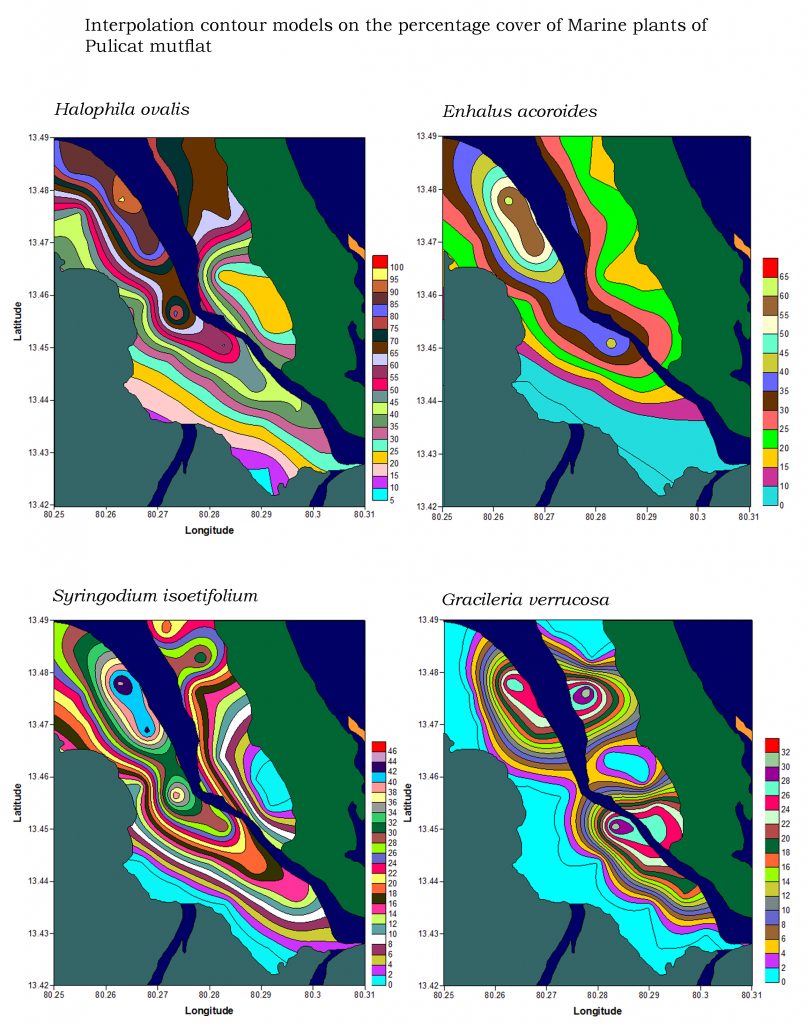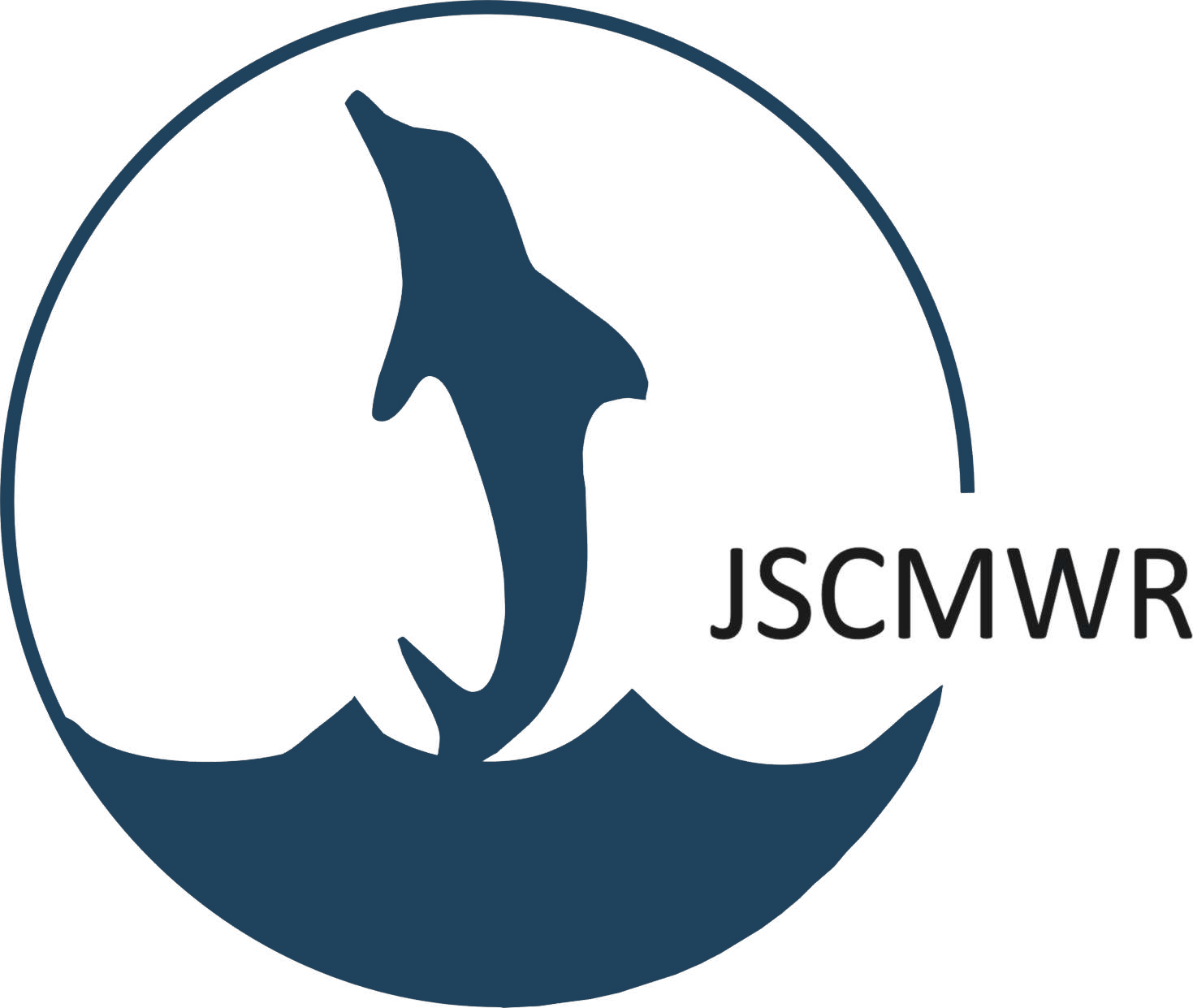Marine Plants in Pulicat
 The following marine plants were observed and identified in Pulicat mudflat ecosystem. The seagrasses are Halophila ovalis (R.Br.) Hook, Syringodium isoetifolium (Asch) Dandy, Enhalus acoroides (L.F.) Royle, and seaweed Gracilaria verrucosa (Hudson). Occurrence study revealed that Halophila ovalis is the dominant species been observed in all stations. Enhalus acoroides has been observed in second dominant seagrass in the mudflat of Pulicat. Syringodium isoetifolium and Gracileria verrucosa were perceived 3rd and 4th dominant species. Study on growth and percentage cover revealed that Halophila ovalis has its unique character to occupy larger area in the study area. Enhalus acoroides is the second dominant species followed by Syringodium isoetifolium and Gracileria verrucosa. Enhalus acoroides yielded greaterbiomass followed by Halophila ovalis, Gracileria verrucosaI and Syringodium isoetifolium. The study area is subjected to moderate fluctuations in temperature from 29.2 – 32.5 oC. Salinity fluctuated from 21 to 36ppt. All marine plants except Halophila ovalis (also meager) in southern side of the mudflat are absent due to fresh water discharge nearby inhabitants. pH ranged from 7.1 to 7.5 and DO fluctuated from 3.1 and 4 mg/l. Nutrient supply seldom acts as a limiting factor in the abundance of marine plants. High content of nitrite in St 4 (14.03mg/l) and low value in St 18 (0.42mg/l) were observed. High amount of nitrate was recorded as 10.3mg/l (St.20) and low as 4 mg/l (St.6&7). Phosphate varied from 0.019 (St. 14) to 0.933 (St.5) mg/l. Silicate varied from 0.53 (St. 15) mg/l to 6.95 (St.12) mg/l.Organic carbon and organic matter can be formed by break down of fragments of seaweeds and sea grasses. In the present study, St 18 has identified to contribute less carbon/ matter and St. 15 contributed high content to the environment.
The following marine plants were observed and identified in Pulicat mudflat ecosystem. The seagrasses are Halophila ovalis (R.Br.) Hook, Syringodium isoetifolium (Asch) Dandy, Enhalus acoroides (L.F.) Royle, and seaweed Gracilaria verrucosa (Hudson). Occurrence study revealed that Halophila ovalis is the dominant species been observed in all stations. Enhalus acoroides has been observed in second dominant seagrass in the mudflat of Pulicat. Syringodium isoetifolium and Gracileria verrucosa were perceived 3rd and 4th dominant species. Study on growth and percentage cover revealed that Halophila ovalis has its unique character to occupy larger area in the study area. Enhalus acoroides is the second dominant species followed by Syringodium isoetifolium and Gracileria verrucosa. Enhalus acoroides yielded greaterbiomass followed by Halophila ovalis, Gracileria verrucosaI and Syringodium isoetifolium. The study area is subjected to moderate fluctuations in temperature from 29.2 – 32.5 oC. Salinity fluctuated from 21 to 36ppt. All marine plants except Halophila ovalis (also meager) in southern side of the mudflat are absent due to fresh water discharge nearby inhabitants. pH ranged from 7.1 to 7.5 and DO fluctuated from 3.1 and 4 mg/l. Nutrient supply seldom acts as a limiting factor in the abundance of marine plants. High content of nitrite in St 4 (14.03mg/l) and low value in St 18 (0.42mg/l) were observed. High amount of nitrate was recorded as 10.3mg/l (St.20) and low as 4 mg/l (St.6&7). Phosphate varied from 0.019 (St. 14) to 0.933 (St.5) mg/l. Silicate varied from 0.53 (St. 15) mg/l to 6.95 (St.12) mg/l.Organic carbon and organic matter can be formed by break down of fragments of seaweeds and sea grasses. In the present study, St 18 has identified to contribute less carbon/ matter and St. 15 contributed high content to the environment.
